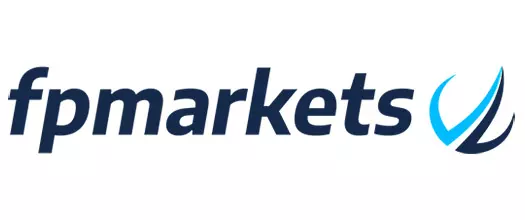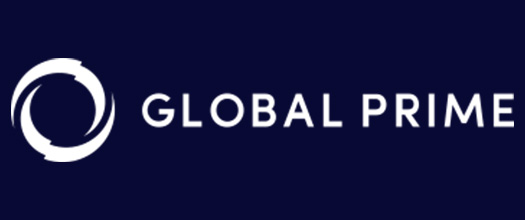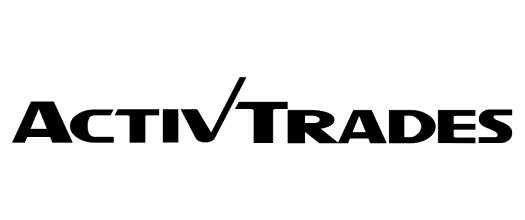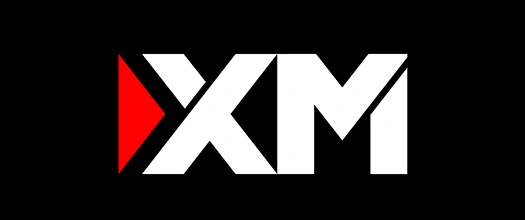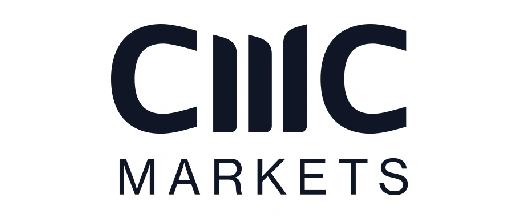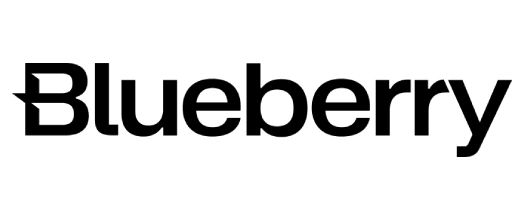Our team of expert traders tested several regulated and trustworthy Nikkei 225 brokers and compiled a top list of the best among them. Every platform that allows CFDs on the Nikkei 225 Index received a quality score based on several factors, including its Trustpilot rating, regulation, fees and commissions, available trading platforms, customer service, and more.
 Plus500 USThis content applies only to Plus500 US and clients from the United States. Trading futures involves the risk of loss.
Plus500 USThis content applies only to Plus500 US and clients from the United States. Trading futures involves the risk of loss. eToro61% of retail investor accounts lose money
eToro61% of retail investor accounts lose money Fusion Markets74-89% of retail's CFD accounts lose money
Fusion Markets74-89% of retail's CFD accounts lose money FP Markets73.85% of retail investor accounts lose money
FP Markets73.85% of retail investor accounts lose money Global Prime74-89% of retail CFD accounts lose money
Global Prime74-89% of retail CFD accounts lose money Pepperstone75.5% of retail investor accounts lose money
Pepperstone75.5% of retail investor accounts lose money
Top Nikkei 225 trading brokers
Now that we have covered the basics of the Nikkei Stock Average and the various ways of trading the index, it is time for you to select a reliable trading broker. We advise you to take some time and choose a well-regulated brokerage brand that is transparent about its pricing policy, has a good track record in the market, and consistently keeps pace with innovation.
 TRADE NOWREAD REVIEWRegulatorsCySEC (Cyprus, # 371/18), FSAS (Seychelles, # SD130), FSCA (South Africa, # 50926), SCB (Bahamas), ASIC (Australia, # 286354), FSCM (Mauritius, # GB21026264)PlatformscTrader, IRESS, MetaTrader 4, MetaTrader 5, TradingView1. FP MarketsMin Deposit$50 (AU$100)FeesOvernight interest (Daily):
TRADE NOWREAD REVIEWRegulatorsCySEC (Cyprus, # 371/18), FSAS (Seychelles, # SD130), FSCA (South Africa, # 50926), SCB (Bahamas), ASIC (Australia, # 286354), FSCM (Mauritius, # GB21026264)PlatformscTrader, IRESS, MetaTrader 4, MetaTrader 5, TradingView1. FP MarketsMin Deposit$50 (AU$100)FeesOvernight interest (Daily):- Sell: -18.08
- Buy: -19.01
Deposit MethodsCommissionsNoneSpreadEUR/USD: AVG 1.2 pips, GBP/USD: AVG 1.4 pips, USDJPY: AVG 1.5 pipsWithdrawal MethodsLeverage EU1:500 (CySEC | Pro Account), 1:30 (CySEC | Retail Account)Leverage non-EU1:30 (ASIC | Retail Account), 1:500 (FSAS | Retail Account)InstrumentsCommodity CFDs, Crypto CFDs, Energy CFDs, Forex CFDs, Index CFDs, Metal CFDs, Stock CFDsTrade Responsibly: Derivative products are highly leveraged, carry a high level of risk and are not suitable for all investors.FP Markets is a prominent international broker that enables trading via the MetaTrader 4, MetaTrader 5, and Iress platforms across multiple asset classes. Currently, the list of CFD indices comprises 13 names, including the Nikkei 225. In addition to the usual information about spreads and overnight fees, users can read short articles about the factors that influence each index and the key moments in its history are.
Traders who decide to use the MT4 or MT5 platforms can choose between Standard and Raw accounts. The first type features zero commission and spreads starting at 1.0 pips, while Raw accounts offer very tight spreads in exchange for a $3 commission each way. Trading conditions for Iress accounts, which are available to Australian users, are different. Each of the Standard, Platinum, and Premier accounts carries a specific ASX commission, and the minimum deposit ranges from AU$1,000 to AU$25,000.
CFD index trading can be performed on the go thanks to the in-house mobile application launched in 2021. In addition to indices, FP Markets mobile traders can operate with shares, commodities, futures, and cryptocurrencies. The app, which can be downloaded from the App Store and Google Play, features a set of useful analysis and trading tools, and enables fast in-app transactions.
- 2. Global PrimeMin Deposit$0FeesSwaps:
- Short points: - 1.08
- Long points: - 1.08
Deposit MethodsCommissionsFrom $0SpreadEUR/USD: AVG 1.04 pips, GBP/USD: AVG 1.3 pips, USDJPY: AVG 1.32 pipsWithdrawal MethodsLeverage EU1:20Leverage non-EU1:500 (ASIC | Pro Account), 1:30 (ASIC | Retail Account), 1:500 (VFSC)InstrumentsCommodity CFDs, Forex CFDs, Index CFDs, Metal CFDsTrading derivatives is high risk. Losses can exceed your initial investment. You should only trade with money you can afford to lose. Any Information or advice contained on this website is general in nature and has been prepared without taking into account your objectives, financial situation or needs. Past performance of any product described on this website is not a reliable indication of future performance.Global Prime is a multi-asset trading broker that has been on the market for more than ten years. The brokerage is Australian-owned and holds licenses issued by the relevant regulatory authorities in Australia, Seychelles, and Vanuatu. The markets currently available in Global Prime’s portfolio include indices, forex, crypto CFDs, commodities, shares, and bonds.
Global Prime is among the online brokers that are not bashful about their pricing policy. On the contrary, the broker provides all the necessary information in a well-structured, easy-to-understand manner. It took us no more than a couple of minutes to determine the Nikkei 225 spreads and swap rates, and that was while we were accessing the platform for the first time. You can find a summary of this information in the table below. We should also clarify that Global Prime does not require a minimum account balance. However, it recommends deposits of at least $200, or the equivalent in another supported currency.
Unlike many of its competitors in the online trading sector, Global Prime offers only one account type – the ECN Trading Account. It comes in two models: Commission-Free and Spreads + Commission. Aside from this pricing structure, all other features are the same – 1-ms execution speed, one-click trading, and access to the MT4, TraderEvolution, and TradingView platforms.
 TRADE NOWREAD REVIEWRegulatorsCONSOB (Italy, # 211), FCA (United Kingdom, # 434413), SCB (Bahamas, # 199667 B), CMVM (Portugal, # 433), FSCM (Mauritius, # GB24203277), CVM (Brazil, # 43050.917/0001-03)PlatformsMetaTrader 4, MetaTrader 5, Proprietary Web, TradingView3. ActivTradesMin Deposit$0Fees
TRADE NOWREAD REVIEWRegulatorsCONSOB (Italy, # 211), FCA (United Kingdom, # 434413), SCB (Bahamas, # 199667 B), CMVM (Portugal, # 433), FSCM (Mauritius, # GB24203277), CVM (Brazil, # 43050.917/0001-03)PlatformsMetaTrader 4, MetaTrader 5, Proprietary Web, TradingView3. ActivTradesMin Deposit$0Fees- 0.5% on deposits (EU/EEA cards)
- 1.5% on deposits (non EU/EEA cards)
- $12.50 for bank transfer withdrawals in USD
- £9 for bank transfers in GBP (SCB and FSC entities only)
- A $10 inactivity fee after 50 weeks
Deposit MethodsCommissionsNo commissionSpreadEUR/USD: AVG 0.5 pips, GBP/USD: AVG 0.8 pips, USDJPY: AVG 0.5 pipsWithdrawal MethodsLeverage EU1:20Leverage non-EU1:400 (CMVM | Pro Account), 1:30 (CMVM | Retail Account), 1:1000 (FSC), 1:200 (SCB)InstrumentsBonds CFDs, Commodity CFDs, Crypto CFDs, ETF CFDs, Forex CFDs, Index CFDs, Share CFDsCFDs are complex instruments and come with a high risk of losing money rapidly due to leverage. 73% of retail investor accounts lose money when trading CFDs with this provider.You should consider whether you understand how CFDs work and whether you can afford to take the high risk of losing your money.Online since 2001, ActivTrades is highly regarded for delivering low-cost trading in a regulated and secure environment. The broker holds licenses from the authorities of Mauritius, Portugal, Brazil, the Bahamas, and the UK, extending its global reach to more than 100,000 customers across 170 countries. Traders can speculate on the rising and falling prices of 33 indices, including the Nikkei 225, FTSE 100, Euro Stoxx 50, and the Dow Jones Industrial Average.
The broker earns revenue solely from spreads, imposing no commissions on index trades. This makes it an excellent choice for budget-minded and novice traders who are not accustomed to calculating commissions before placing orders. Speaking of spreads, ActivTrades advertises target spreads of 10 points for Nikkei cash CFDs and 8.50 points for futures CFDs. Cash index positions range from 0.01 to 50 lots, with each point worth one dollar. Futures CFDs on the index have a lower maximum trading volume of 10 lots, with each point valued at $5.
ActivTrades enables retail clients to trade the Nikkei 225 with generous leverage of up to 1:1000 under the FSC-regulated version of the website. Leverage ratios are dynamic, meaning they decrease in proportion to trading volume. Larger positions receive lower leverage ratios, and smaller positions receive higher ones. Customers have no reason to fear slipping into debt, as ActivTrades provides negative balance protection to all traders, both retail and professional. The broker supports MT4, MT5, and TradingView. Trading the Nikkei 225 is also possible via its intuitive in-house platform, which performs effortlessly on all modern desktop and mobile devices.
- 4. AxiMin Deposit$0FeesAmendable future rolloversCommissionsFrom $0SpreadFrom 8.0Leverage EUUp to 1:30Leverage non-EUUp to 1:500Over-the-counter derivatives are leveraged products that carry a high level of risk to your capital. Trading is not suitable for everyone and may result in you losing substantially more than your initial investment. You do not own, or have any rights to, the underlying assets. You should only trade with money you can afford to lose.
Axi is a reputable brokerage brand that offers a wide selection of trading markets and trading conditions capable of satisfying both novice and experienced users. The only platform available is MetaTrader 4, which allows traders to trade indices, shares, commodities, precious metals, and other assets. MT4 can be used as a desktop application, in its WebTrader version, or as a dedicated app for iOS and Android devices. Commissions start at $0 for Standard accounts and go up to $7 per round trip for Pro accounts.
Within Axi’s platforms, the Nikkei 225 is considered a futures index and is therefore subject to rollover charges. Exact amounts are announced once liquidity providers release them, usually closer to the date the rollover is applied. Keep in mind that indices may be unavailable for a short time while the rollover is applied.
If you experience any difficulties while trading with Axi, feel free to contact the friendly and proficient customer care team by live chat, phone, or email. Customer support representatives are helpful and ready to answer questions even if you are not a registered Axi user.
 TRADE NOWREAD REVIEWRegulatorsCIRO (Canada), CySEC (Cyprus, # 347/17), FRSA (United Arab Emirates, # 190018), FFAJ (Japan, # 1574), FSCA (South Africa, # 45984), FSRA (Canada, # 190018), ISA (Israel, # 514666577), JFSA (Japan, # 1662), ASIC (Australia, # 406684), BVIFSC (Virgin Islands, British, # SIBA/L/13/1049), CBI (Ireland, # C53877)PlatformsAvaOptions, DupliTrade, AvaSocial, MetaTrader 4, MetaTrader 5, AvaTadeGO, Proprietary Web, ZuluTrade5. AvaTradeMin Deposit$100FeesOvernight fees:
TRADE NOWREAD REVIEWRegulatorsCIRO (Canada), CySEC (Cyprus, # 347/17), FRSA (United Arab Emirates, # 190018), FFAJ (Japan, # 1574), FSCA (South Africa, # 45984), FSRA (Canada, # 190018), ISA (Israel, # 514666577), JFSA (Japan, # 1662), ASIC (Australia, # 406684), BVIFSC (Virgin Islands, British, # SIBA/L/13/1049), CBI (Ireland, # C53877)PlatformsAvaOptions, DupliTrade, AvaSocial, MetaTrader 4, MetaTrader 5, AvaTadeGO, Proprietary Web, ZuluTrade5. AvaTradeMin Deposit$100FeesOvernight fees:- Sell: -0.0084%
- Buy: -0.0083%
Deposit MethodsCommissionsNoneSpreadEUR/USD: AVG 0.8 pips, GBP/USD: AVG 1.2 pips, USDJPY: AVG 1.3 pipsWithdrawal MethodsLeverage EU1:20Leverage non-EU1:400 (Pro Account), 1:30 (Standard Account)InstrumentsBonds CFDs, Commodity CFDs, Crypto CFDs, Crypto Options, Energy CFDs, ETF CFDs, Forex CFDs, Forex Options, Index CFDs, Index Options, Metal CFDs, Share CFDs, Stock CFDs, Stock Options, US Stock OptionsCFDs are complex instruments and come with a high risk of losing money rapidly due to leverage. 71% of retail investor accounts lose money when trading CFDs with this provider. You should consider whether you understand how CFDs work and whether you can afford to take the high risk of losing your money.The Irish-headquartered brokerage brand AvaTrade is one of the most popular and trusted entities in today’s online trading field. The company maintains satellite offices in the Asia-Pacific region and Europe and holds multiple licenses issued by top-tier regulatory bodies, a fact that places AvaTrade among the brokers that provide the safest trading environments.
The broker offers a broad variety of platforms, enabling both manual and automated Nikkei 225 trading whether traders prefer desktop computers or mobile devices. The default, browser-based interface is WebTrader, the simplest and most user-friendly option offered by AvaTrade. Traders who prefer more advanced tools can choose either MetaTrader 4 or MetaTrader 5. Among other functionalities, MT4 and MT5 feature Guardian Angel, a risk-management instrument that provides instant feedback on traders’ actions.
The range of markets accessible through AvaTrade’s platforms is extensive. When it comes to indices, more than 30 are currently available, including popular benchmarks such as the DJIA, DAX, Nikkei 225, and US TECH 100. The Nikkei Stock Average is offered with spreads of 10.0 points over market pricing and a 5% margin. One click on the index symbol opens a new window with detailed information about retail and professional leverage, overnight fees, minimum trade size, and more.
- 6. FBSMin DepositCent accounts: $10; AU$50 (ASIC accounts)Fees
- Swap long: -6.2
- Swap short: -7.0
Deposit MethodsCommissions0%SpreadEUR/USD: AVG 0.7 pips, GBP/USD: AVG 1.2 pips, USDJPY: AVG 1.3 pipsWithdrawal MethodsLeverage EU1:30 (CySEC)Leverage non-EU1:30 (ASIC), 1:3000 (FSC), 1:500 (Pro Account), 1:30 (Retail Account)InstrumentsEnergy CFDs, Forex CFDs, Index CFDs, Metal CFDs, Share CFDsᏟᖴᎠs are complex instruments and come with a high risk of losing money rapidly due to leverage. 76.5% of retail investor accounts lose money when trading ᏟᖴᎠs with this provider. You should consider whether you understand how ᏟᖴᎠs work and whether you can afford to take the high risk of losing your money.FBS is an award-winning trading broker with a large number of registered users residing in more than 100 countries. Trades can be executed via the MetaTrader 4 and MetaTrader 5 platforms, or through the proprietary FBS Trader – a mobile trading application that can be downloaded from the App Store or Google Play.
Pricing information for the Nikkei 225 index is readily accessible, so after just a few clicks or taps you can see, for example, that the average spread is 13.0. Other important details are presented within the same window, namely swap rates, initial margin, and leverage. You can also view the index’s price movement over different time periods ranging from 5 minutes to 1 week. Remember that, as with all other brokers, the swap fees shown are subject to change and are therefore valid for only a limited period.
The brokerage website features an analytics section with subsections for news and market updates, as well as a TV section containing informational videos, weekly insights, and more.
In addition to its competitive trading conditions, this Nikkei 225 broker attracts customers with a diverse selection of bonuses and promotional offers. Currently, FBS-registered users can benefit from a 100% Deposit Bonus, a Level Up Bonus of up to $140, various cashback promotions, the CopyTrader Referral Program, and the FBS Loyalty Program. Eligibility and T&Cs may vary by country, so check with the brokerage for further details.
 TRADE NOWREAD REVIEWRegulatorsCFTC (United States, # 0516820), CySEC (Cyprus, # 120/10), DFSA (United Arab Emirates, # F003484), FSCA (South Africa, # 49976), IFSC (Belize, # 000261/27), FSCM (Mauritius, # GB23202700)PlatformsMetaTrader 4, MetaTrader 4 MultiTerminal, MetaTrader 5, Proprietary Mobile, Proprietary Web7. XM GroupMin Deposit$5Fees
TRADE NOWREAD REVIEWRegulatorsCFTC (United States, # 0516820), CySEC (Cyprus, # 120/10), DFSA (United Arab Emirates, # F003484), FSCA (South Africa, # 49976), IFSC (Belize, # 000261/27), FSCM (Mauritius, # GB23202700)PlatformsMetaTrader 4, MetaTrader 4 MultiTerminal, MetaTrader 5, Proprietary Mobile, Proprietary Web7. XM GroupMin Deposit$5Fees- Swap long: -2.15
- Swap short: -2.19
Deposit MethodsCommissionsNoneSpreadEUR/USD: AVG 1.2 pips, GBP/USD: AVG 1.5 pips, USDJPY: AVG 1.4 pipsWithdrawal MethodsLeverage EU1:30 (CySEC | Retail Account)Leverage non-EU1:1000 (IFSC | Retail Account)InstrumentsBonds CFDs, Commodity CFDs, Crypto CFDs, Energy CFDs, ETF CFDs, Forex CFDs, Forex Options, Index CFDs, Index Options, Metal CFDs, Share CFDs, Stock CFDs, Stock Options, US Stock OptionsCFDs are complex instruments and come with a high risk of losing money rapidly due to leverage. 74.89% of retail investor accounts lose money when trading CFDs with this provider. You should consider whether you understand how CFDs work and whether you can afford to take the high risk of losing your money.If you are in search of a reputable Nikkei 225 broker that offers commission- and fee-free trading, XM is a brand you should take into account. The brand has experienced significant growth since its founding in 2009 and today serves traders from nearly 200 countries. XM provides its users with the opportunity to choose among three account types – Micro, Standard, and XM Zero.
As you might guess, this variety is intended to attract different types of traders to its platform – novices, active practitioners, and even professionals. If you are not sure you can handle the XM platform properly, you can first try a Micro account. It offers all the functionalities of a Standard account, the only difference being a contract size 100 times smaller. Conversely, if you are an experienced trader whose top priority is to reduce trading costs as much as possible, you will likely opt for an XM Zero account. It allows trading with spreads as low as 0 pips in exchange for a small commission.
XM offers one of the most comprehensive learning sections we have encountered while reviewing online trading brokers. Moreover, a significant part of the educational hub is devoted to video content, both pre-recorded and live, which makes it engaging even for younger audiences. There is a Beginner room and an Advanced room, each with its own schedule for the upcoming week.
- 8. CMC MarketsMin Deposit$0FeesHolding costs:
- Buy: -2.9840%
- Sell: 3.0160%
Deposit MethodsCommissionsNone on indicesSpreadEUR/USD: MIN 0.5 pips, EUR/USD: AVG 0.6 pips, GBP/USD: MIN 0.9 pips, GBP/USD: AVG 1.1 pips, USDJPY: MIN 0.7 pips, USDJPY: AVG 1.3 pipsWithdrawal MethodsLeverage EU1:500 (FCA | Pro Account), 1:30 (BaFin | Retail Account), 1:30 (FCA | Retail Account)Leverage non-EU1:500 (ASIC | Pro Account), 1:30 (ASIC | Retail Account), 1:20 (MAS | Retail Account)InstrumentsCommodity CFDs, Crypto CFDs, Energy CFDs, ETF CFDs, Forex CFDs, Index CFDs, Metal CFDs, Share CFDs, Stock CFDs, US Stock CFDsSpread bets and CFDs are complex instruments and come with a high risk of losing money rapidly due to leverage. 73% of retail investor accounts lose money when spread betting and/or trading CFDs with this provider. You should consider whether you understand how spread bets and CFDs work and whether you can afford to take the high risk of losing your money.CMC Markets is a publicly traded brokerage company established in 1989 in the UK. Its operations are strictly regulated and comply with the requirements of the most reputable authorities in the industry, including the FCA in the UK, ASIC in Australia, MAS in Singapore, IIROC in Canada, BaFin in Germany, and the FMA in New Zealand.
In the About Us section of the broker’s main website, there is a kind of Hall of Fame where you can see all the awards CMC Markets has earned so far. The latest achievement is Best CFD Provider at the 2022 Online Money Awards. Among last year’s honors is the award for Best Spread Betting Broker from the Good Money Guide Awards 2021. These two awards reflect the brokerage’s two main areas of operation, namely spread betting and CFD trading. They encompass various asset classes – indices, commodities, shares, ETFs, and more.
CMC Markets gives its clients access to both proprietary and third-party trading platforms. Next Generation is the name of the in-house platform, and it boasts an abundance of features and functionalities. The range of order types supported by the platform includes market orders, limit and stop-entry orders, stop-loss, trailing stop-loss, and take-profit orders. An advanced charting package, module-linking capability, and pattern-recognition scanner are just some of the enticing features Next Generation provides.
 TRADE NOWREAD REVIEWPlatformscTrader, MetaTrader 4, MetaTrader 5, TradingView, Blueberry X, WebTraderMin Deposit$100FeesSwap rates as per formulaDeposit MethodsCommissions$0SpreadEUR/USD: AVG 1.1 pips, GBP/USD: AVG 1 pips, USDJPY: AVG 1.5 pipsWithdrawal MethodsLeverage EUUp to 1:30Leverage non-EU1:30 (ASIC | Retail Account), 1:500 (FSCM), 1:500 (VFSC)InstrumentsCommodity CFDs, Crypto CFDs, Forex CFDs, Index CFDs, Share CFDsMargin trading involves a high level of risk and is not suitable for all investors. You should carefully consider your objectives, financial situation, needs and level of experience before entering into any margined transactions with Blueberry Markets, and seek independent advice if necessary. Forex and CFDs are highly leveraged products, which means both gains and losses are magnified. You should only trade in these products if you fully understand the risks involved and can afford to incur losses that will not adversely affect your lifestyle.
TRADE NOWREAD REVIEWPlatformscTrader, MetaTrader 4, MetaTrader 5, TradingView, Blueberry X, WebTraderMin Deposit$100FeesSwap rates as per formulaDeposit MethodsCommissions$0SpreadEUR/USD: AVG 1.1 pips, GBP/USD: AVG 1 pips, USDJPY: AVG 1.5 pipsWithdrawal MethodsLeverage EUUp to 1:30Leverage non-EU1:30 (ASIC | Retail Account), 1:500 (FSCM), 1:500 (VFSC)InstrumentsCommodity CFDs, Crypto CFDs, Forex CFDs, Index CFDs, Share CFDsMargin trading involves a high level of risk and is not suitable for all investors. You should carefully consider your objectives, financial situation, needs and level of experience before entering into any margined transactions with Blueberry Markets, and seek independent advice if necessary. Forex and CFDs are highly leveraged products, which means both gains and losses are magnified. You should only trade in these products if you fully understand the risks involved and can afford to incur losses that will not adversely affect your lifestyle.Blueberry Markets is a trusted Australian trading broker that ranks very high in client reviews, mainly because of its competitive pricing and super-fast customer support. We personally tested this by initiating a live chat session, and we received a competent reply in less than 30 seconds. Blueberry Markets’ Australian operations are regulated by ASIC, while for all other eligible regions the broker holds a license issued by the Securities Commission of the Bahamas (SCB).
A major part of Blueberry Markets’ portfolio is index CFD trading, with options for zero commissions and ultra-tight spreads. Currently, traders with an account at the broker can trade more than 30 indices, including JPN225, ASX200, SPX500, UK100, and more. Both Standard and Direct accounts require a minimum deposit of $100. Regarding swap rates, they are calculated using the following formula:
Swap Rate x Lots (Volume) x Number of Nights = Swap (in base currency)
Exact figures can be viewed by logging in to your MT4 or MT5 platform and right-clicking the index symbol.
For traders who are new to the brokerage or to index trading in general, a completely free demo account is available. It is pre-funded with $100,000 in virtual capital and remains active for 30 days.
- 10. IC MarketsMin Deposit$200FeesFrom 0%Deposit MethodsCommissionsNoneSpreadEUR/USD: AVG 0.82 pips, GBP/USD: AVG 1.03 pips, USDJPY: AVG 0.94 pipsWithdrawal MethodsLeverage EU1:500 (CySEC | Pro Account), 1:30 (CySEC | Retail Account)Leverage non-EU1:1000 (FSAS | Retail Account)InstrumentsCommodity CFDs, Crypto CFDs, Energy CFDs, Forex CFDs, Index CFDs, Metal CFDs, Stock CFDsTrading Derivatives carries a high level of risk to your capital and you should only trade with money you can afford to lose. Trading Derivatives may not be suitable for all investors, so please ensure that you fully understand the risks involved and seek independent advice if necessary.
Since its establishment in 2007, IC Markets has consistently grown to become one of the key entities in the online trading field. It falls somewhat short of being considered a global brand, as traders from the US, Canada, Japan, New Zealand, Israel, and Iran are not currently allowed to operate through the brokerage. The activities of IC Markets are regulated by ASIC, CySEC, and the Financial Services Authority of Seychelles.
The Nikkei 225 is one of 25 indices that can be traded via the platforms provided by IC Markets. The minimum spread is 6.0, while the average across all accounts is 8.858. The range of markets covered by the broker also includes forex, commodities, bonds, digital currencies, stocks, and futures. Depending on whether your priority is low spreads or no commissions, you may choose a Standard account, a Raw Spread account, or a Raw Spread account with cTrader. Commissions for the latter two account types are $3.50 and $3.00, respectively.
Novices will find the educational content on the IC Markets website very helpful, and traders who prefer a more passive trading approach can try the value-added tools ZuluTrade and AutoTrade.
The Nikkei Stock Average (Nikkei 225) is known around the globe as the primary index of Japanese stocks. Its calculation commenced in 1950, so the index’s existence coincides with Japan’s post-World War II economy. In brief, the Nikkei 225 is a price-weighted equity index that encompasses 225 blue-chip stocks listed on the Tokyo Stock Exchange. An annual review is conducted in September, and any constituent replacements occur in October.
Because the Nikkei Stock Average is Asia’s oldest index and uses a similar calculation method, it is often considered the Japanese equivalent of the Dow Jones Industrial Average (DJIA) in the US.
How Nikkei 225 trading works for traders and brokers
We are often asked whether it is possible to trade the Nikkei 225 if you reside outside Japan, for example in the USA or Australia. This concern likely stems from the perception of Japanese culture as relatively reticent and conservative. We will not comment on how accurate that perception is, but any such restrictions do not apply to Nikkei 225 online trading.
Generally speaking, the usual way to trade Japan’s main stock index is by buying and/or selling exchange-traded funds that track its performance. To do so, you need to follow a few simple steps:
- Set up an account with a Nikkei 225 trading broker that enables trading in international securities.
- Fund your account using any of the supported payment solutions. Pay attention to transaction fees and other charges. There is a good selection of trusted brokerage companies that allow fee-free deposits, so it is better to choose one of them.
- Purchase the securities and use the broker’s tools to properly monitor and manage your investment.
If you are accustomed to trading US-listed ETFs and do not wish to change your trading behaviour, you have one option: the MAXIS Nikkei 225 Index ETF. It is denominated in US dollars and trades on the New York Stock Exchange.
Holders of international brokerage accounts can choose among BlackRock Japan’s iShares Nikkei 225 ETF, Daiwa Asset Management’s Daiwa ETF Nikkei 225, and Nomura Asset Management’s Nikkei 225. A factor that should always be kept in mind is the currency exchange rate, as the TSE/TYO operates primarily in yen.



